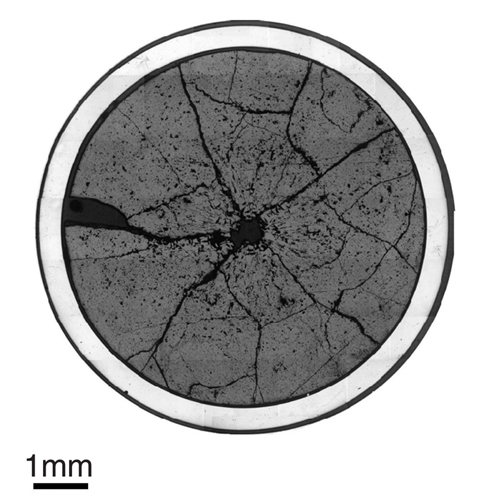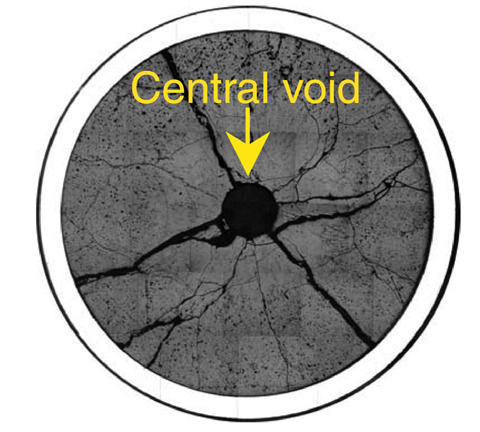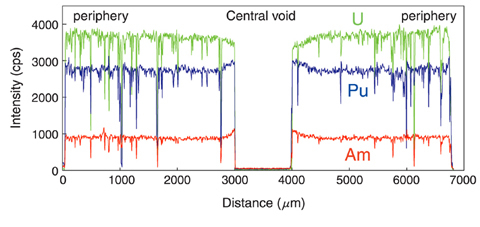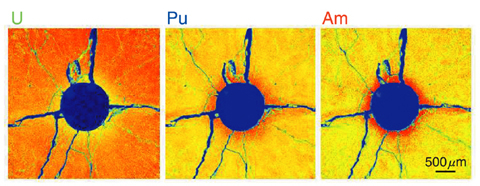(a) 10min. irrad.  |
(b) 24hr. irrad.  |
Fig.1-5 Ceramograph of irradiated 5% Am-MOX fuel
(c) Radial distribution  |
(d) In the vicinity of the central void  |
Fig.1-6 The elemental distribution of 5%Am-MOX fuel irradiated for 24 hour
MOX fuels containing several percent concentrations of minor actinides (MA) and fission products (FP) are promising candidates for a closed nuclear cycle system based on a fast reactor. Cycle management of MA such as Am, Np and Cm is of crucial importance from the viewpoint of reduction of environmental burden, effective use of natural resources, and enhancement of nuclear nonproliferation. For evaluating the irradiation performance of the fuel, it is indispensable to understand irradiation behavior, such as Am redistribution and fuel cladding chemical interaction.
In order to confirm the effect of MA addition on irradiation behavior of MOX fuel pellets, an irradiation program named "Am-1" is being conducted in JAEA. The Am-1 program consists of two short-term irradiation tests of 10-minutes and 24 hours, and a steady-state irradiation test. The two short-term irradiation tests have been successfully completed. After the reactor power was raised continuously to the targeted peak linear heating rate of 430W/cm and kept there for 10 min, the power was manually shut down. The second irradiation test was performed with almost the same power history up to the targeted peak heating rate of 430W/cm and held for 24 hours.
Post irradiation examinations such as ceramography and electron probe microanalysis (EPMA) have been conducted in order to evaluate the irradiation behavior of the fuel.
No sign of fuel melting was found in any of the specimens taken from the Am-MOX fuel pins irradiated for 10 min and 24 hour. This implied that the thermal design had a sufficient safety margin for these test conditions. The configuration of the microstructure after 10 min irradiation was similar to that of conventional oxide fuels irradiated for a short time at a high linear heating rate (Fig.1-5(a)). After the 24 hour irradiation, a central void developed, and the change in structure seen at the beginning of irradiation was completed (Fig.1-5(b)).
The results of EPMA revealed that Am migrated to the radial center of the fuel pellet up the temperature gradient during the initial stage of irradiation. This tendency is similar to that of Pu (Fig.1-6).
It has been reported that the melting point temperature is decreased by the addition of a large amount of Am, which leads to a smaller design margin for fuel melting. The present EPMA results indicated that careful consideration must be given to the redistribution behavior of Am as well as that of Pu for evaluating its impact on the thermal performance of Am-MOX fuels.
The irradiation behavior at a high linear heat rate observed in the Am-1 program will be useful for the modeling and design study of Am-containing MOX fuel.